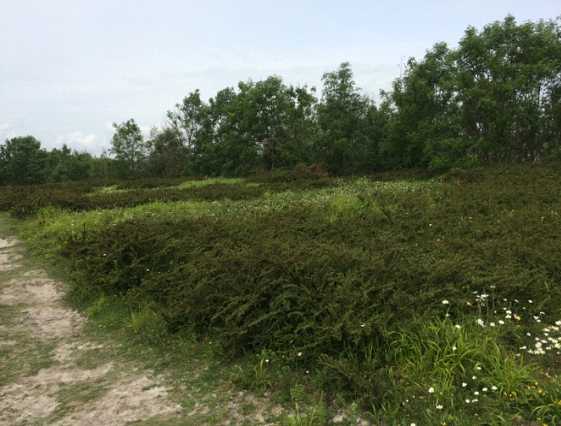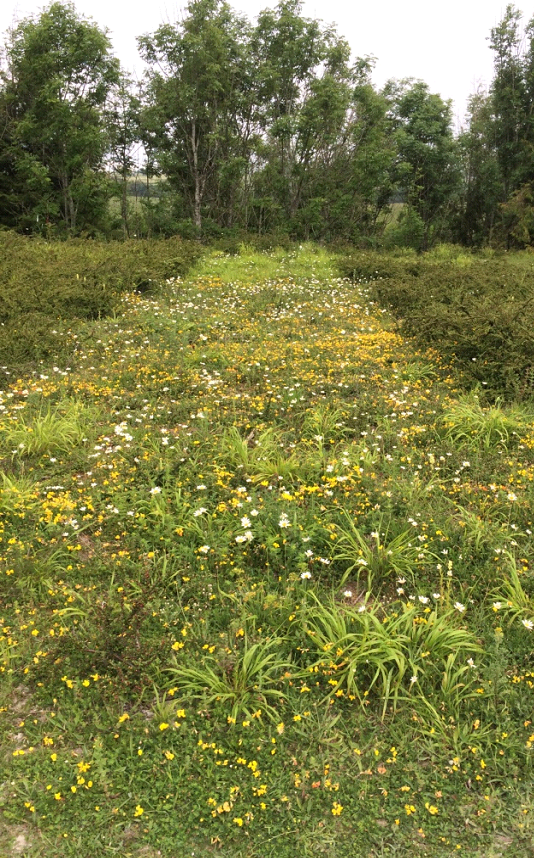Cotoneaster Clearout

Cotoneaster species were introduced to the UK from Asia in the 19th century and has since smothered many limestone habitats and out-competed the now endangered native species known as Great Orme berry (Cotoneaster cambricus). Cotoneaster shrubs appeared on top of the Spetchells sometime before 2007, the vast majority of plants being Cotoneaster horizontalis, though to date we have identified 7, possibly 8, species. Cotoneaster is now listed under Schedule 9 of the Wildlife and Countryside Act in England and Wales, therefore it is an offence to plant or otherwise cause it to grow in the wild.
During 2016, with help from SCA apprentices, several areas of heavy cotoneaster growth on Spetchell #1 were cut and removed. Since then our volunteers have annually cleared these areas with excellent herbage re-establishment. Particularly important is Bird’s-foot trefoil (Lotus corniculatus), which is the main larval food plant for the declining Dingy Skipper butterfly (Erynnis tages).

June 2021 - Cleared area with re-seeded Bird’s-foot Trefoil and Ox-eye Daisies in bloom
Regular volunteer work parties aim to keep as much of the existing meadow areas free of Cotoneaster as possible by cutting down, digging up and occasionally strimming the shrubs. This is an ongoing job as, to date, we have found no way to permanently eradicate this invasive plant. The main concern is that it completely takes over an area, out-competing areas of native wildflowers.
Could you help with this work by joining one of our Volunteering Events?
